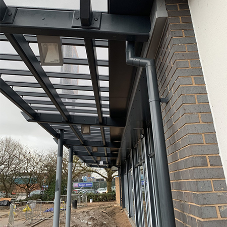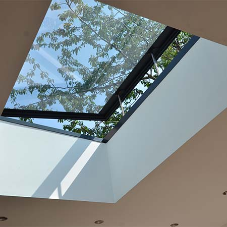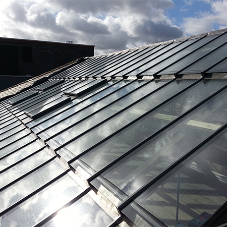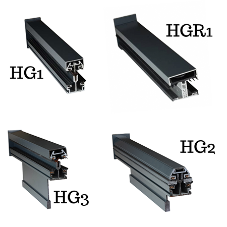A blog by Howells Glazing...
Tracey Jackson, business development manager for Howells Patent Glazing looks at the importance of natural light in combating the ill-effects of the pandemic and how rooflights will be an important architectural tool in designing happy, healthy buildings.
Amidst the uncertainty and chaos of the pandemic, natural light is playing an important role in maintaining our equilibrium, never more so than since British Summer Time ended in October. It is important for our immune systems; it boosts our Vitamin D levels and maintains our circadian rhythm. It is hugely beneficial for our physical and psychological well-being, and it helps us to focus and generally lead a happier and healthier life. With a greater emphasis on occupant and user well-being, natural light is going to be a powerful architectural design tool in the future.
There are many products and technologies available to ‘collect’ light and direct it to key areas of the room, including windows, glazed doors, light tubes, mirrors and other reflective surfaces. Popular amongst architects are rooflights, or skylights. They're particularly useful for bringing light to the centre of a buildings and rooms, where natural light from windows cannot ordinarily reach. They also work as design features to help delineate and highlight certain areas, above a kitchen island for example.
Why Choose Rooflights
Letting in around twice as much light than vertical glazing, and up to three times as much as dormer windows, rooflights offer flexibility. They are particularly beneficial when designing a new build extension where the vertical windows have been removed. Rooflights allow daylight to penetrate further into the building, illuminating areas that would otherwise be gloomy.
The National Association of Rooflight Manufacturers (NARM) states that "…the glazing is pointing directly at the light source with very little diffused or reflected light. Consequently, rooflights and roof windows can supply a great deal more daylight into the heart of the home thereby illuminating areas that might otherwise be quite dark."
NARM reports that "the amount of energy needed to light a building artificially is often much greater than the amount of energy used to heat it and is often the greatest single energy use in operating the building." The impact is both financial and environmental with "…electricity used for lighting being more expensive in terms of CO2 than gas used for heating."
Glazing Options
Rooflights are also a practical way of boosting light levels and occupant wellbeing without increasing solar gains – a challenge for those architects and designers wishing to increase the number and size of glazed areas.
Many rooflight manufacturers combat the issue of solar gains through high performance glazing. Specifiers can choose from a wide variety of glass options including coated and uncoated. Solar control glass, for example, can help retain heat in cooler months, with a leading glass manufacturer achieving a thermal insulation U-value of 1.0 Wm2K.
While coatings can sometimes change the colour inside the building, there are options which are neutral in appearance and have low internal reflection. Both of these factors help to give a clearer view to the outside, as does self-cleaning glass.
Now widely specified, self-cleaning glass is a popular choice for vertical and roof windows, conservatories and rooflights. A unique coating breaks down the organic matter and even works on cloudy days and at night.
Better Homes
Recent experiences such as working from home, home schooling and generally, spending more time in our houses, have highlighted certain design flaws in UK housing. In our haste to build more houses, often rooms sizes have decreased and daylight, ventilation and air quality are frequently compromised, while open plan living/dining spaces are testing the patience of many home-workers and their families.
In her housing column for Building Design, head of housing research at Levitt Bernstein, Julia Park "…considered what architects and policymakers should learn from the coronavirus crisis about housing design. Many of my colleagues mentioned windows – not just for the obvious benefits of daylight and sunlight but also their ability to connect us to the wider world and remind us we’re not alone. In fact, windows seem to be second only to outdoor space in the what-really-matters-list…”
As we learn to live with the virus and issues such as mental health and physical wellbeing are tackled openly and honestly, it will be interesting to see what impact this has on future building design. I believe that natural light, and indeed products such as rooflights, will be an important factor, ultimately helping to reduce energy costs, improving the sustainability and performance of our buildings and generally boosting the well-being of occupants and users.
The natural architectural tool [BLOG]
| T | (01384) 820060 |
|---|---|
| F | (01384) 820061 |
| E | info@howellsglazing.co.uk |
| W | Visit Howells Glazing's website |
| Triton Works, Woods Lane, Cradley Heath, Warley, West Midlands, B64 7AN |
Products by this Company






